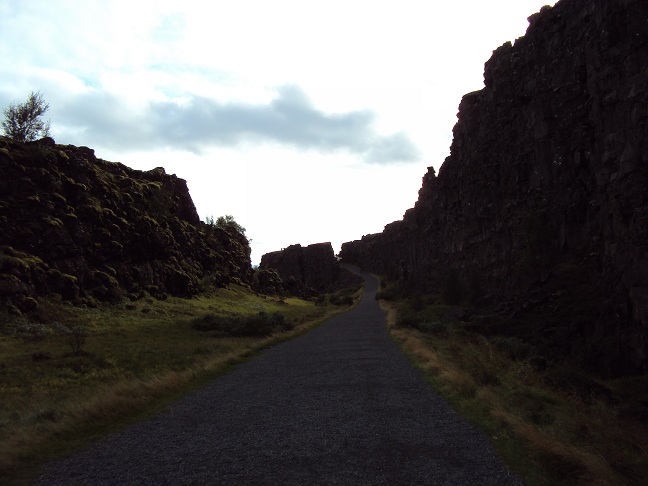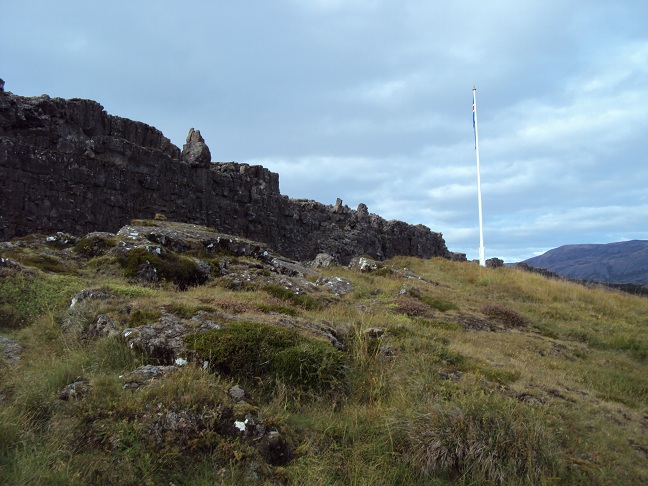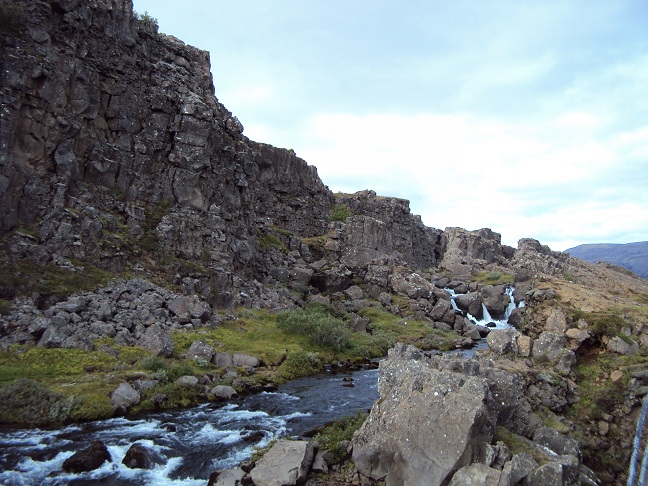I was driven directly to Þinvellir by Ingi Bjarnason, a geophysicist who has done considerable work on Iceland´s mantle plume. If you are going to study plate tectonics, you could hardly pick a better spot than this, where the American and European tectonic plates are simultaneously separating and shearing. Iceland is built up from the many layers of lava erupting from this critical spot along the mid-Atlantic ocean ridge. This violent action is why volcanos are constantly erupting here. The Surtsey eruption created a new island in 1963. Eldfell buried part of a town in lava and ash in 1973, events that figure in Yrsa Sigurdardóttir’s excellent mystery novel Ashes to Dust. Eyjafjöll’s ash plume paralysed Europe’s aviation in 2010. In 2011, Grímsvötn’s erupted underneath the Vatnajökull glacier. An eruption of Katla could be a monumental disaster, on the scale of the disaster at Laki in 1783, which killed a quarter of Iceland’s population and approximately six million people worldwide through its effects. Katla has been showing some menacing behaviour through satellite imagery. However, Alain told me that another eruption of Hekla, which pops off on a regular basis, is the most immediate and likely danger. Hekla is in tradition the “gateway to Hell”, and figures in the works of Herman Melville and William Blake.
Alain was a charming guide to the feast of geology that rolled past my eyes, answering all my questions and guesses expertly.

Two continents at Þingvellir. To the left is the North American Continental Plate. To the right is Europe.
In the broad valley of Þingvellir, you can plainly see the crack between the Western Hemisphere and the Eastern. A long, solemn wall of lava forms the eastern side, crenelated like a castle. At one spot, a round boulder is frozen, pinched between two crescent arms of rock. A lower, more broken up wall forms the western wall. The trench between the two is the historic site of the Alþingi (Allthing), Iceland’s medieval parliament. Here, the contentious Icelanders of the Sagas gathered annually to legislate and try legal cases, without any King ruling over them, for three centuries. While the medieval Icelandic state was not democratic in the same way as a modern elected government, it is nevertheless important as an important landmark in the history of the democratic idea. Given the subjects of my writing, it would be impossible for me to visit Iceland without seeing Þingvellir, and I was deeply moved by the experience.
A dramatic waterfall pours over the cliff at the western end. There’s a picturesque church nearby, in the simple, unadorned Icelandic style. There was a group of nuns picking berries, and a sprinkling of tourists, but nothing like a crowd. A few sheep wandered about. Sunlight flooded the valley, and all was quiet. Mountains and glaciers in the distance in every direction. To the east, the bright blue of a large lake, Þingvellirvatn. Across the lake, a string of geothermal plumes were clearly visible.
I saw no sign of exploitation or vulgarity at Þingvellir. A footpath, some wooden steps, a discrete service building, a few explanatory plaques, and a flagpole on the Law Rock commemorating where Iceland’s independence was declared constitute the only human meddling in the scene, and these were all practical and justifiable alterations for a place of such historic importance.


0 Comments.